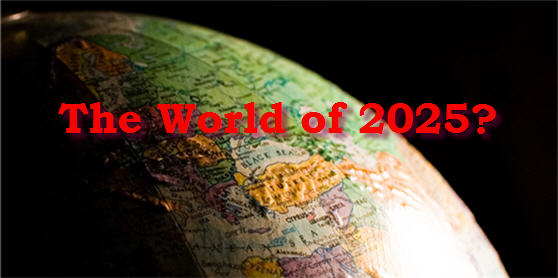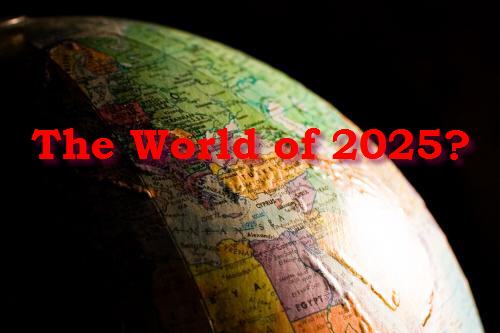
The rise in attractiveness of “State Capitalism” development models is cited as a potential consequence of the increasing economic power of Russia and particularly China in the latest report from the National Intelligence Council, Global Trends 2025: A Transformed World.
Particularly in light of the recent financial crisis, the Western capitalist model, particularly the “Anglo-Saxon” model of the US and UK with its greater emphasis on the private sector, may have lost some of its luster. The report describes:
The monumental achievement of millions escaping poverty underpins the rise of new powers – especially China and India – on the international scene but does not tell the whole story. Today wealth is moving not just from West to East but is concentrating more under state control… With notable exceptions like India, the states that are beneficiaries of the massive shift of wealth – China, Russia, and the Gulf states – are non-democratic and their economic policies blur distinctions between public and private. These states are not following the Western liberal model for self-development but are using a different model – “state capitalism.” State capitalism is a loose term to describe a system of economic management that gives a prominent role to the state. (8)
Amid the current turmoil in the West, these “State run” development models will become attractive – and for good reason. These models can be useful in accelerating growth by concentrating capital and focus on particular industries, typically in industrial products for export. South Korea used this model in the post war era to rapidly move from a largely agrarian economy to one that has one of the highest rates of GDP per capita in Asia. These “state run” models seem to be particularly useful when the private sector is not sufficiently mature or organized (or existent) to compete globally. However, as the South Korean example shows, state run economic development is not a long term solution for the proper functioning of an economy. Various pressures, both internal and external, arise and reveal its limitations, and adjustments are made to relax the role of the state in driving the economy.
This is acknowledged in the report, “the state run model does not yet constitute anything like an alternative system and, in our view, is unlikely to ever be one.” (14) The initial rapid development that this model makes possible creates problems as the economy grows and matures. A larger, more complex economy becomes just too big and unwieldy to be controlled by state bureaucrats and eventually becomes a drag on growth.
The weak currency that makes export platforms attractive begins to appreciate necessitating “heavy intervention in currency markets, leading to heavy official asset accumulation, typically until now in the form of U.S. Treasury Bonds.” (9) As an investment, US Treasury bonds are probably not the most productive of asset categories, but they do help keep local currency down and the US dollar up to ensure steady supply to U.S. consumers. In the long term, this arrangement won’t work. These capital flows would probably receive higher returns if invested domestically because capital could mix with (cheaper) labor to create much larger productivity gains. This is in line with accepted economic theory. The export focus of these economies and the policies to support these export bases comes at the expense of local consumption and eventually normal economic progress. The “State capitalist” model thus begins to show its flaws.
Additionally, the “State capitalist” model, while promoting globally competitive “champions” in some industries, does so at the expense of the rest of the economy. Capital is allocated inefficiently, according to government priority and not to where it is most effective. As certain industries are fortified, companies serving the growing consumer class remain weak – certainly not a way to create a healthy, fully integrated national economy that is creating prosperity for the greatest number.
“State capitalist” models are, however, effective in leveraging the power of the state to obtain resources for key industries. “The new powers increasingly will have the means to acquire commodities in an effort ensure continued development.” (12) This will be valuable as resources become scarcer globally and competition for them more fierce, as the report predicts by 2025. This will certainly not be looked upon favorably by western companies who will decry that links to the state bring unfair advantage. But this advantage may sustain the attractiveness of this model – at least for a time.
The seemingly unfair advantage of state owned industry will also be a point of contention for direct competitors of these companies and could encourage Western companies to turn to their governments to protect them from this unfair advantage. There will be pressure on China and Russia in particular to adjust their “monetary policy and openness to foreign investment.” (7)
In time the appeal of “State capitalism” will probably run its course, though its popularity will probably increase in the short term. The Japanese model of tight inter-relationship of businesses to promote strong export growth and stability, much touted in the late 1980s, has waned as a development strategy. Both strategies are useful for quickly mobilizing resources and creating fast economic growth, the fatal flaw of each is that they fail to take into account the growth of the domestic, consumer economy. Adjustments will have to be made which will also effect the U.S. and Europe as they would be receiving less liquidity from the emerging markets, this should be done in a measured and methodical way, but the end result will be more mature markets in the emerging countries and a better, more sustainable type of globalization.
James O’Connor is assistant director of the Atlantic Council’s Global Business Program. His views are his own. Photo Photo by Flickr user ToastyKen modified under Creative Commons license.
GLOBAL TRENDS 2025 SERIES:
- Global Trends 2025: A Transformed World
- NIC Chairman Thomas Fingar Presents “Global Trends 2025”
- Predicting the Future is Hard – And Necessary – James Joyner
- U.S. Dominance Ending – James Joyner
- Terrorism Here Today, Gone Tomorrow? – James Joyner
- Asia’s Ascendency Seen in Intelligence Forecast – Joseph Snyder
- Climate Change Will be More Severe in 2025 –Erica McCarthy
- Economic Rise of the East – James O’Connor
- State Capitalism on the Rise? – James O’Connor
Image: globe-2025_3.jpg
